This artwork honours the 6th Airborne Division, No. 38 Group RAF, and the Glider Pilot Regiment and their involvement in the D-Day landings.
In April 1943, Major-General Richard Gale was tasked with forming the 6th Airborne Division – an elite force which was to be ready within nine months for the planned Allied invasion of Europe. Young men from across the armed forces volunteered to join and faced demanding training in parachuting, glider operations, and night assaults. The Division was designed for rapid, surprise deployment behind enemy lines to seize and hold key objectives.
The Glider Pilot Regiment was made up of highly capable volunteer soldiers from the British Army, trained to serve as both pilots and frontline fighters. Glider pilots formed an elite infantry, trained to fight alongside the troops they transported after landing.
No. 38 Group RAF, formed in 1942, was a specialist Royal Air Force formation tasked with transporting airborne troops, and their equipment into combat – often under fire and at night. Their role was crucial to the success of British airborne operations throughout the war.
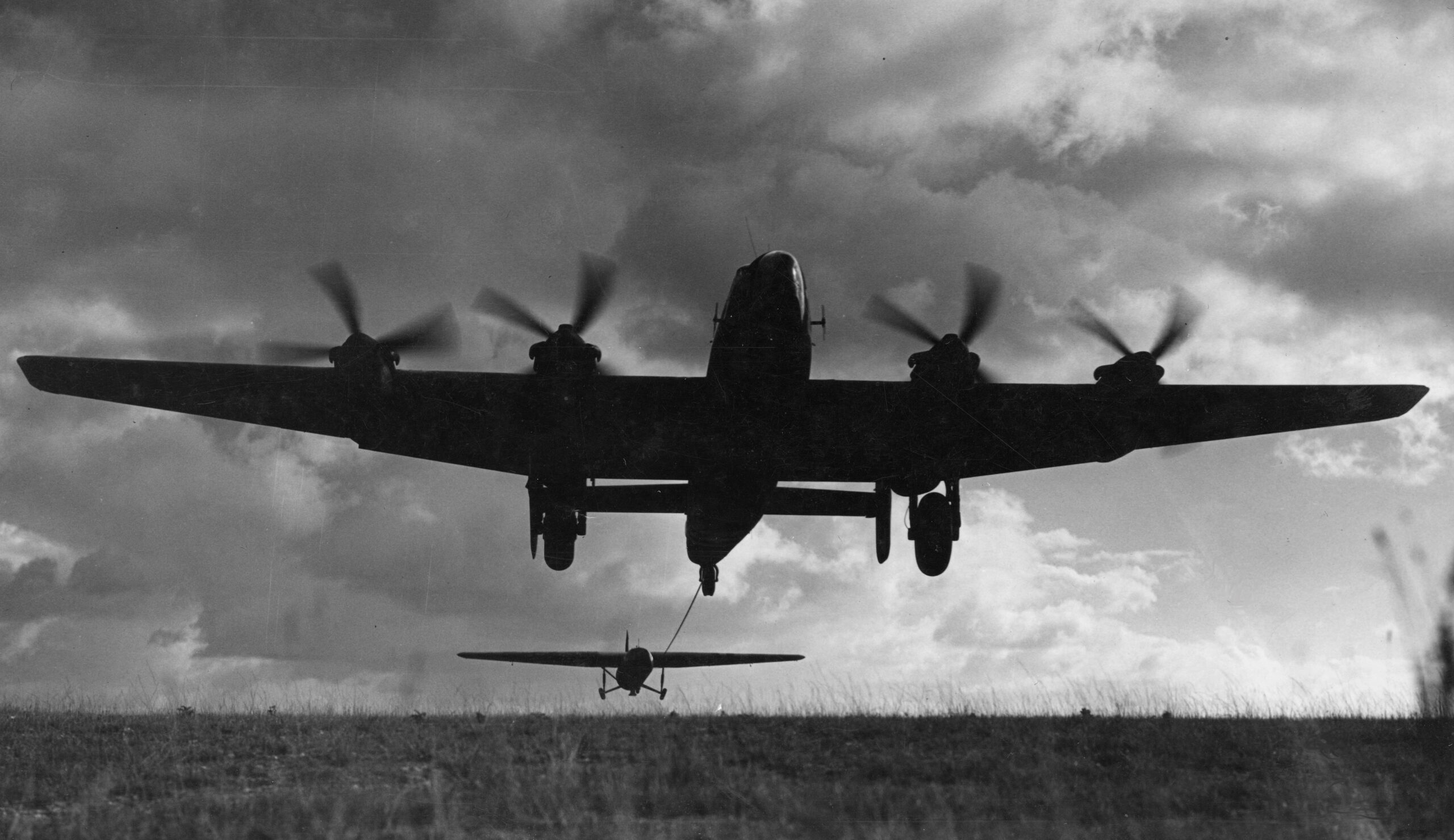
The Horsa Glider
The Airspeed Horsa Glider was a wooden troop-carrying transport aircraft, with no engine, capable of carrying 28 fully armed and equipped airborne soldiers, or a Jeep and trailer or gun.
Constructed almost entirely from 3-ply timber with a cotton canvas covering, the Horsa was developed at a time during the Second World War when both materials and manufacturing capacity were under immense strain. To address this, the aircraft was designed for production in furniture workshops across the country, effectively as a ‘flat-pack’ kit of over 62 component parts. These kits were assembled by teams of mainly civilian men and women.
With a wingspan of 27 metres and a total length of 20 metres, a fully laden Horsa weighed almost seven tonnes.
Approximately 3,800 Horsa gliders were built during the Second World War. In part due to its fragile wooden construction, along with the extraordinarily hostile environments it was deployed in, only one survives intact today. In many ways, they could be considered single-use aircraft: even if a glider survived the hazards along the way and the challenge of landing, often at speeds of around 100 miles per hour, there was little expectation that it would be recovered from behind enemy lines.
D-Day
On D-Day, an airborne assault involving 13,000 aircraft from airfields across Britain preceded an amphibious landing involving over 5,000 vessels. This vast operation marked a decisive turning point in the Second World War, paving the way for the liberation of Western Europe from Nazi occupation.
As part of ‘Operation Overlord’, RAF Harwell played a key role in the Normandy landings, dispatching aircraft that carried 6th Airborne Division pathfinders, airborne troops (including Divisional HQ), jeeps, guns, trailers, motorbikes and other equipment.
The first Pathfinder aircraft took off from Harwell at 23.03 on 5 June 1944 to mark landing zones for the initial assault. Throughout the night, forty-five Albemarle aircraft of 295 and 570 Squadrons RAF, and twenty-five Horsa gliders of ‘A’ Squadron the Glider Pilot Regiment, transported airborne personnel and equipment to their designated zones as part of Operation Tonga. Gliders were released after crossing the French coast, and their pilots flew them to landing zones behind enemy lines. In the evening of D-Day, a further forty Horsas were towed to Normandy as part of Operation Mallard.
Following D-Day, the 6th Airborne Division held the front east of the River Orne, engaging in fierce combat through June, July and August. They were finally withdrawn on 27 August 1944, after 82 days in action, having suffered 4,457 casualties – 821 killed, 2,709 wounded, and 927 missing.
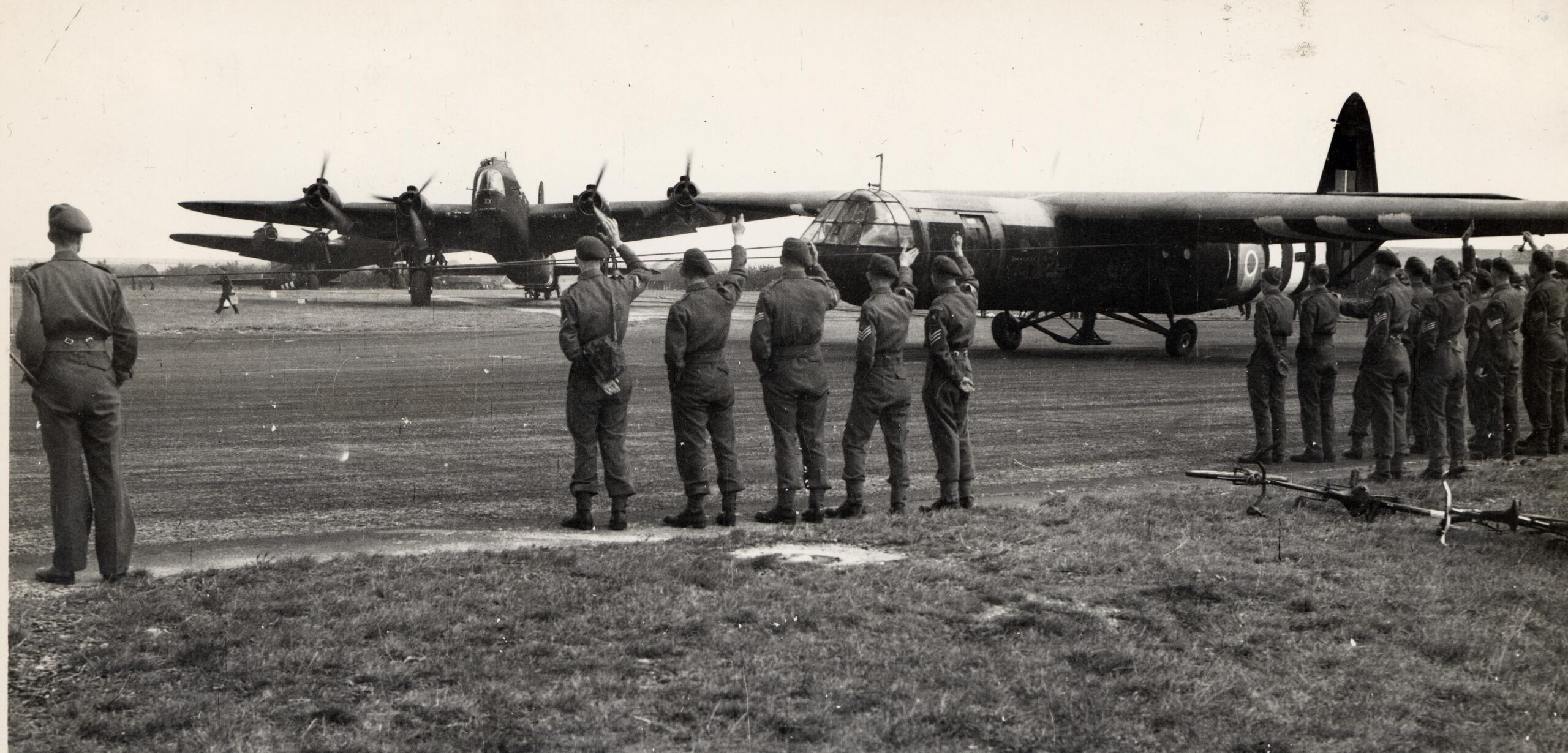
Artist Statement
My artistic practice is rooted in research. When I first began to think about this memorial, I started with a deep dive into history, reading books, exploring archives and websites, and discovering personal testimonies. I have drawn inspiration from the voices of those who volunteered to join the airborne forces, whose experiences offer both emotional resonance and historical depth.
One description that struck me was from a Second World War glider pilot, who said of the Horsa glider, “there’s only one way, and that’s down, it’s like flying a brick.” That stark image captured something essential about the quiet bravery and inevitability faced by those involved. It also shaped how I began to think about form – weight, descent and groundedness – as both metaphor and structure.
This sculpture seeks to evoke the design and production of this remarkable wooden aircraft, and to honour all those who were involved: craftsmen, engineers, pilots and the servicemen it carried. It aims to evoke something of the experience of those who, with extraordinary courage, flew, or were flown, overnight from this location across the English Channel to occupied France.
The work draws from the precious voices of the servicemen, arranged within the rhythm and spacing of brick paving. Each engraved ingot marks a fragment of memory: solid, specific and quietly commemorative. They are laid down to create a surface shaped by memory, testimony, sacrifice and time, to honour individual experiences within the broader story of collective courage.
there’s only one way, and that’s down, it’s like flying a brick
Second World War glider pilot
The Sculpture
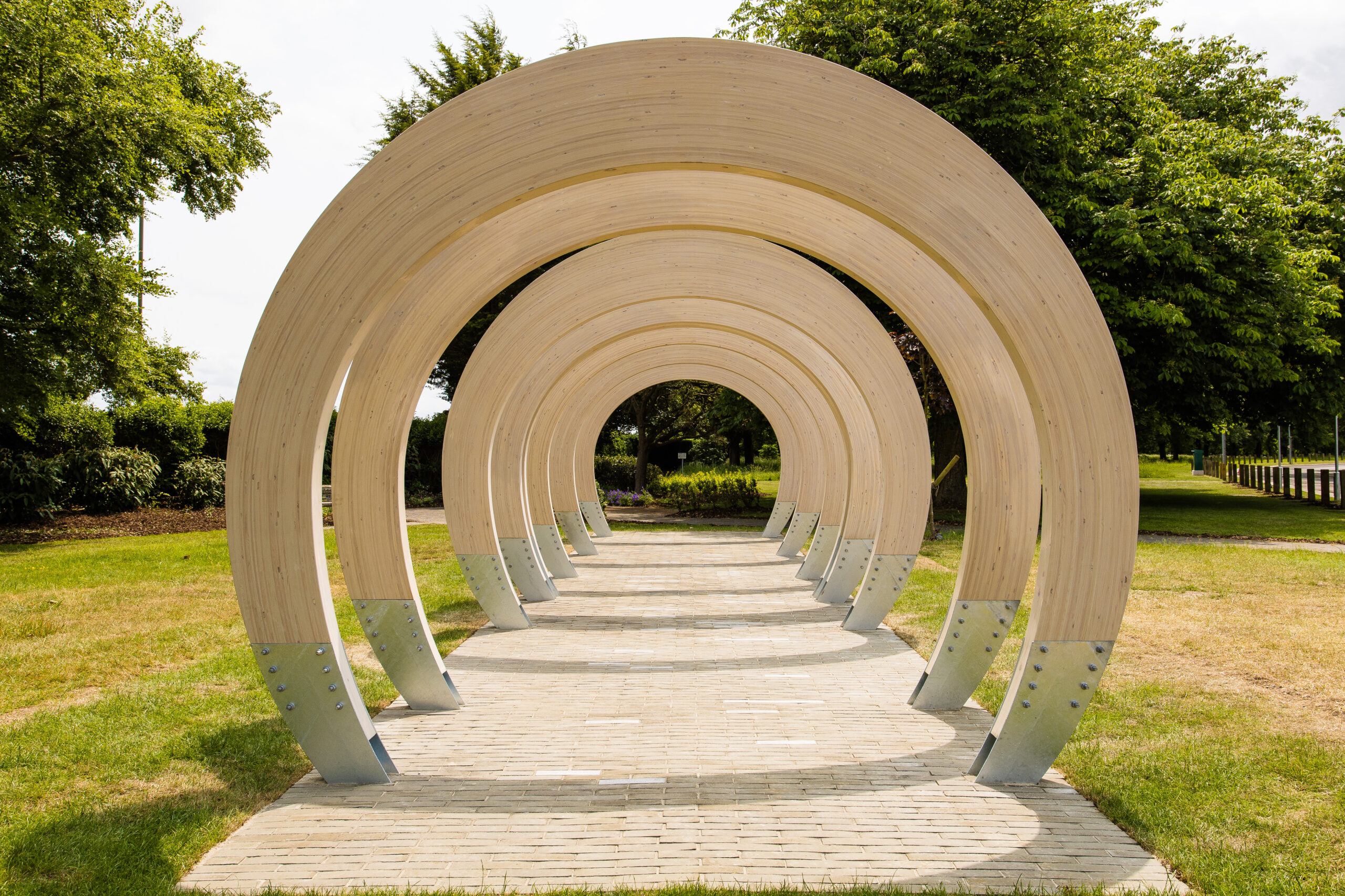
The main form of the sculpture is based on the central fuselage of the Horsa glider, a confined space of around 10.5 metres where up to twenty-eight servicemen would have sat on benches, facing each other on their journey towards combat. With little interior lighting, no engine, and no possibility of turning back once their tow ropes were released, it must have felt like being in the belly of a whale, to be so enclosed and full of uncertainty.
The eight sculptural curved beams which form this sculpture are based on the shape, overall length, and spacing of the Horsa’s internal bulkheads, scaled up by a factor of 1.33 to allow the viewer to walk under them. This aspect of the design was informed by original drawings, provided by BAE Systems. We are also grateful to the Army Flying Museum at Middle Wallop, where we were able to view and measure surviving parts of an original glider.
Set into the surrounding paving, engraved ingots carry quotations from allied servicemen who flew from RAF Harwell and other airfields. Each one offers a fragment of lived experience, drawn from first-hand accounts.

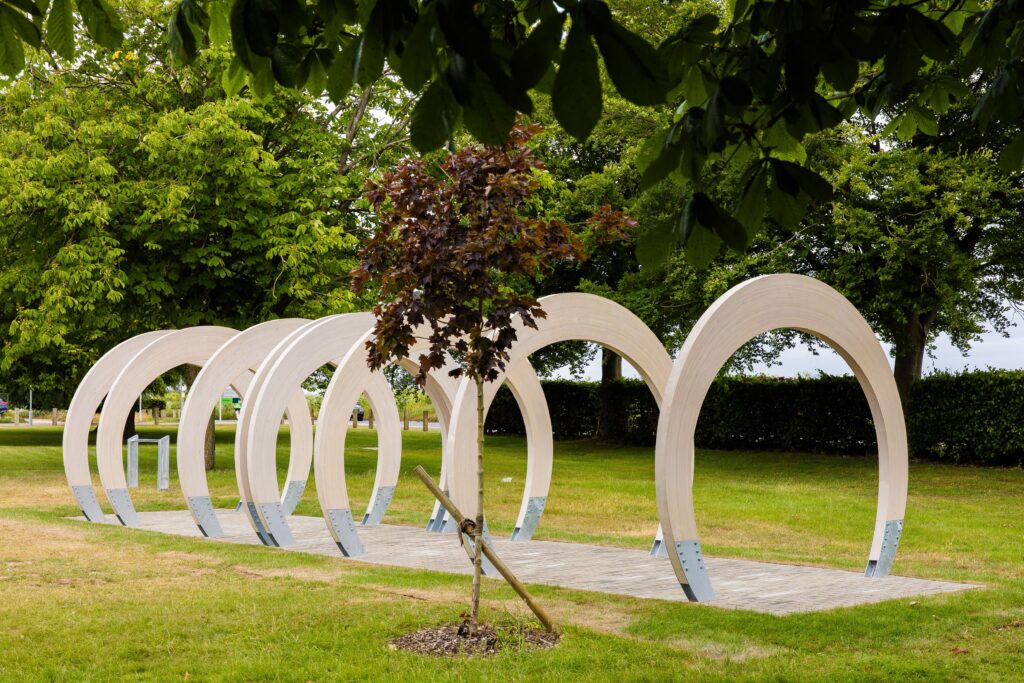
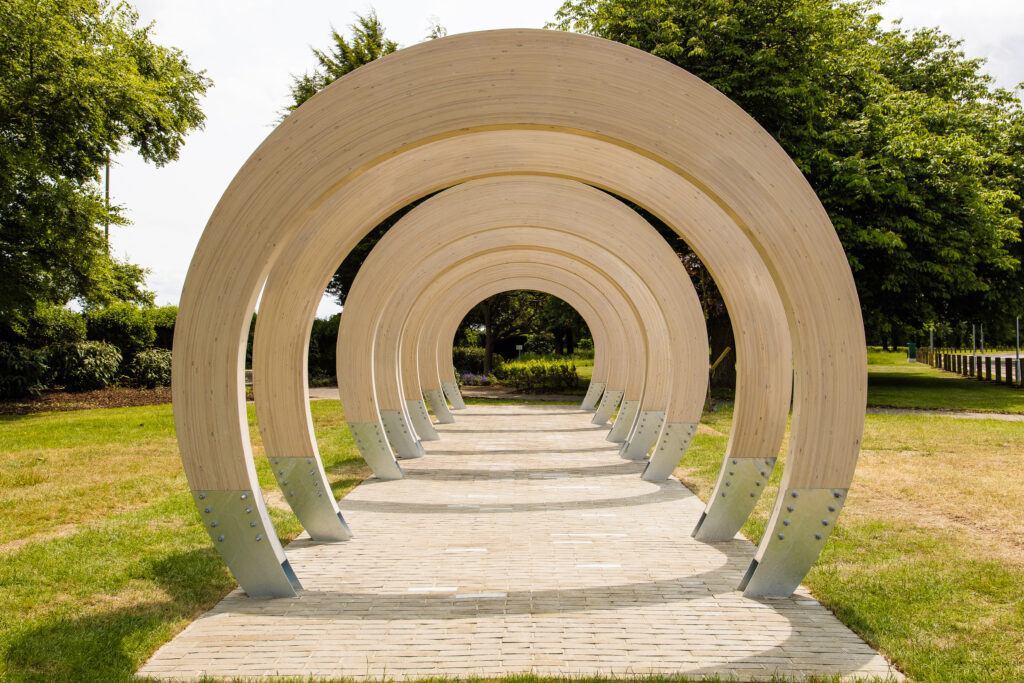
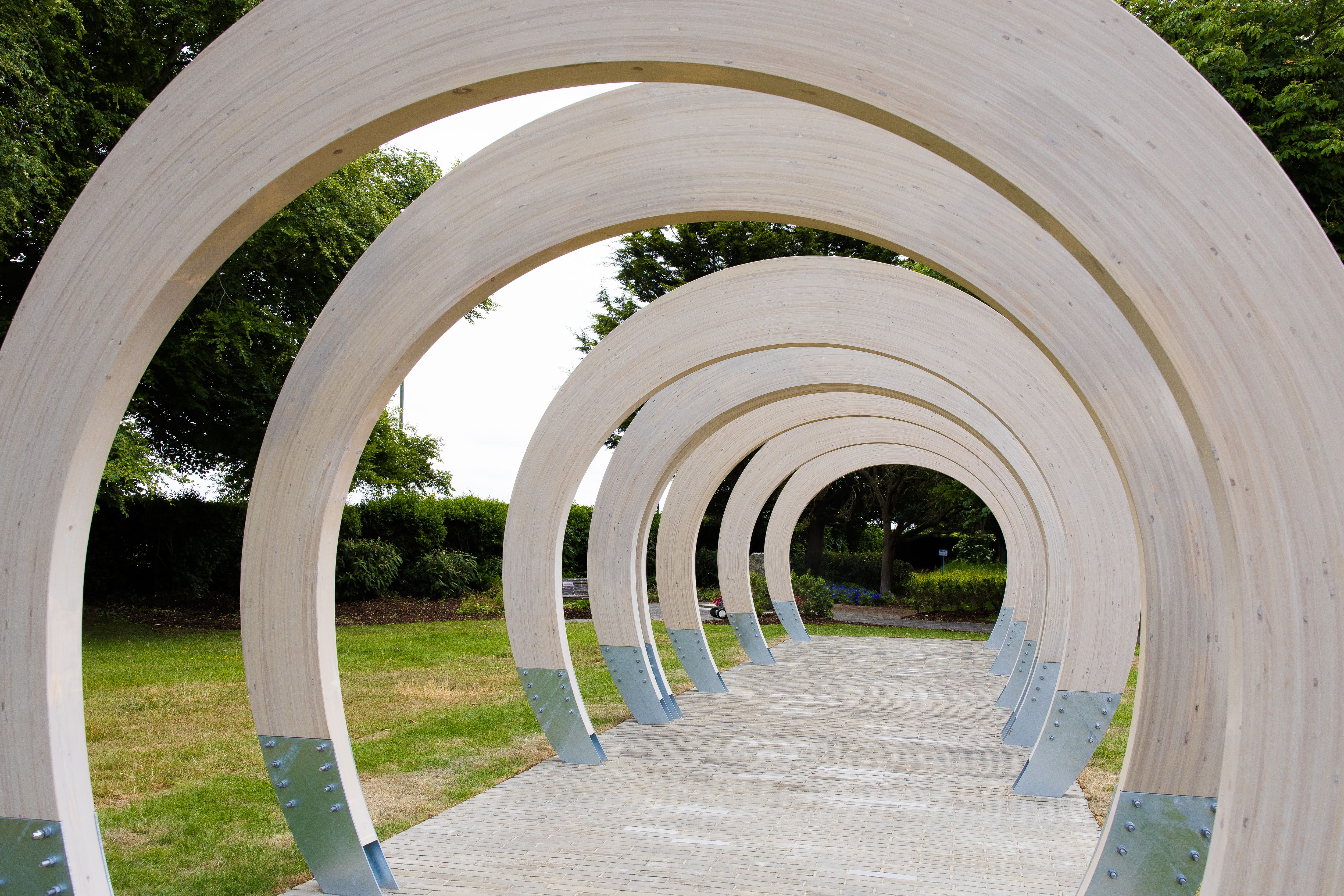
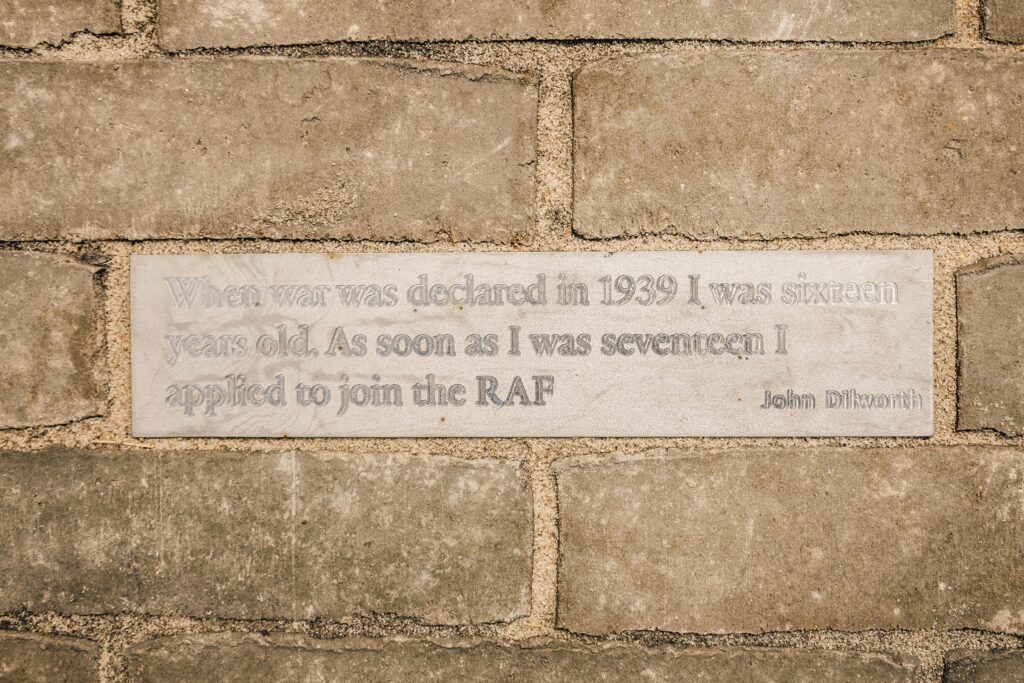
PROJECT DETAILS
Designed by Charlotte Holmes, Rogue Designs
Fabrication by Buckland Timber
Ingots and signage by CR Fabrication
In collaboration with Harwell Science and Innovation Campus
